I really enjoyed reading Fiona Mauchline’s post “Teach Teens Unplugged. Why on earth?!” post today”.
Through unplugged teaching you can reach the person…….and the person can “reach” you
In her article Fiona wrote:
“Unplugged, or dogme, teaching is about dialogue. It’s about supporting students so that they can express themselves. It’s also about listening. With adult language learners, you listen to their language and their stories, show an interest, identify needs, build a lesson, help them construct knowledge. But with teenagers, although the process is essentially the same, it goes beyond just feeding in language to a hungry human. Through unplugged teaching, you can reach the person; you can provide the teen with an adult figure who listens, tells stories, supports them in their studies and ‘needs’, you can help them access their imagination, build their self-esteem, scaffold their need to hear ‘I can’ ringing out from their inner voice.”
I’m always surprised at watching classes in Secondary Schools when students are using books which were actually written for students above the age of 18, they don’t work conceptually, they are outside young people’s experience and they often obstruct rather than aid language learning.
I was reminded too today of the memorable moments that I always ask students to come up with at the end of my courses and why they were memorable. This was what a fifteen-year-old Hungarian student came up with at the end of a year we had spent together in a Secondary School classroom.
Eminem’s “Drips” would never have appeared in a coursebook, the parsnip approach to publishing ensures that nothing like that is allowed. Parsnip is an acronym which stands for : no politics, alcohol, religion, sex, narcotics, isms or pork. See Luke Meddings’ article here.
The discussion we had on the Iraq war was very lively and I had found an article from my local Wolverhampton newspaper “The Express and Star” in which an 18-year-old soldier had been killed. We discussed the rights and wrongs of war and how they would feel if they had to go to war or if their boyfriends had to go to war. On the topic of festivals,when it was Hannukah three of the students did project work on it. It turned out that all three had Jewish backgrounds. One of them invited me to a Hannukah celebration, which I went to on my way home from work one cold December evening and after that, unsurprisingly, we got on even better in the classroom than we had done before.
Using the music that students like in the classroom and making sure that everybody’s music is listened to throughout the year is a crucial variable in classroom dynamics, it brings in a contemporary element and it is something which, for copyright and being-up-to-date reasons, will rarely appear in traditional coursebooks.
Moving away from the coursebook, even the coursebooks that we like
Interestingly, all the memorable things this student came up with were things which weren’t in the coursebook we were using, which was a coursebook that I myself had written with a German and a group of Hungarian teachers which actually focused on the world of young people. It was a coursebook which I was proud of and which I enjoyed using but the fact that the majority of the year we spent together was on issues generated by what was happening in the world and the interests of the students themselves was a sharp reminder of the freshness and appropriateness of “unplugged” conversation.
To me this seems to indicate that Fiona’s belief that we have a role in supporting students needs, bolstering their self-esteem and being a sympathetic listener are all spot-on and a part of teaching unplugged.
Being a sympathetic listener
In my teacher training role the best film I know of and use to develop these skills is “Kes” by Ken Loach. I still have the orginal poster on the wall of my flat and it is a film I never ever tire of and one which I will always use on teacher training courses. Thanks Fiona for the post, these things are so important and while there are many technological devices which can aid learning in the classroom your post has reminded us not to forget one of the main functions of a classroom in school where teenagers are the people we teach! Listening to teenagers and teaching teenagers to listen in our modern, mobile, multitasking world remains a major challenge for teachers today. I hope there are ways of combining the best that hand-held devices have to offer with a pedagogy that is rooted in students learning from teachers and teachers learning from students. I am sure there is.

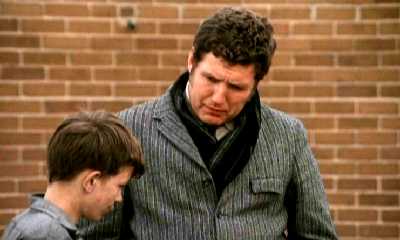

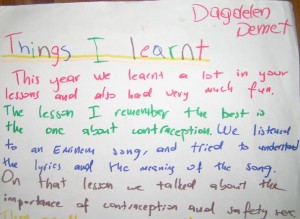
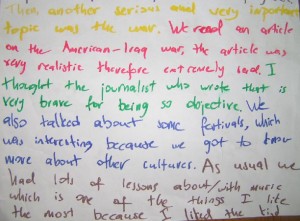
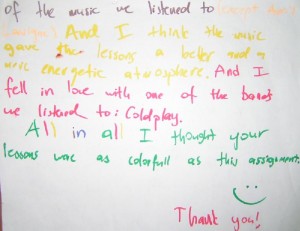
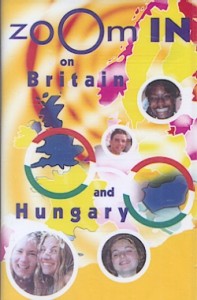

Having graduated from the ELTE many years ago, I am mainly speci
I have come across your blog and found this article very interesting. I share your view on the importance of connecting with your teenage students through topics initiated by them, through issues that are not covered in language course books. I graduated from the ELTE many years ago with an English and a French Master’s degree in language arts with teaching qualification and have been teaching mainly Business English at university and in companies in France for the past ten years. Last year I was asked to teach teenagers to fill the gap between what French education provides in terms of language teaching and what the real language needs are today. So I ended up with a few teenage girls that I taught in one-to-one lessons. Whatever I do in my teaching is based on communication, so I had to find a way to take our conversations beyond a stressful and boring teacher-student ping-pong game. I set up a blog with the aim to bring English outside the lessons and with the secret goal of motivating French middle school students to communicate with each other in English. It did the trick! French are more than reluctant to say anything in English. Teenagers are especially shy about using a foreign language. The blog provided a perfect framework for them to write about their daily activities, their hobbies, their favorite TV show without any pressure. They were also very happy to comment on each other’s story, even if just in a few words. Anything they wrote had to be approved by me, and they always got a reply with my remarks, i.e. corrections in their English. I consider this blog as a collaborative framework, a sort of running workshop between me and my students evolving into a direction defined by their interests with my language support, guidance and feedback complementing our face-to-face lessons. They accepted the rule of “Only in English” and from then on, they have shown a spectacular progress in their productive language skills. You can visit the blog at http://www.teensenglsih.wordpress.com
It is far from being perfect, but I consider it as a creative platform, where teenagers have the first word.
It can serve as a concrete example of what you write about in your article.